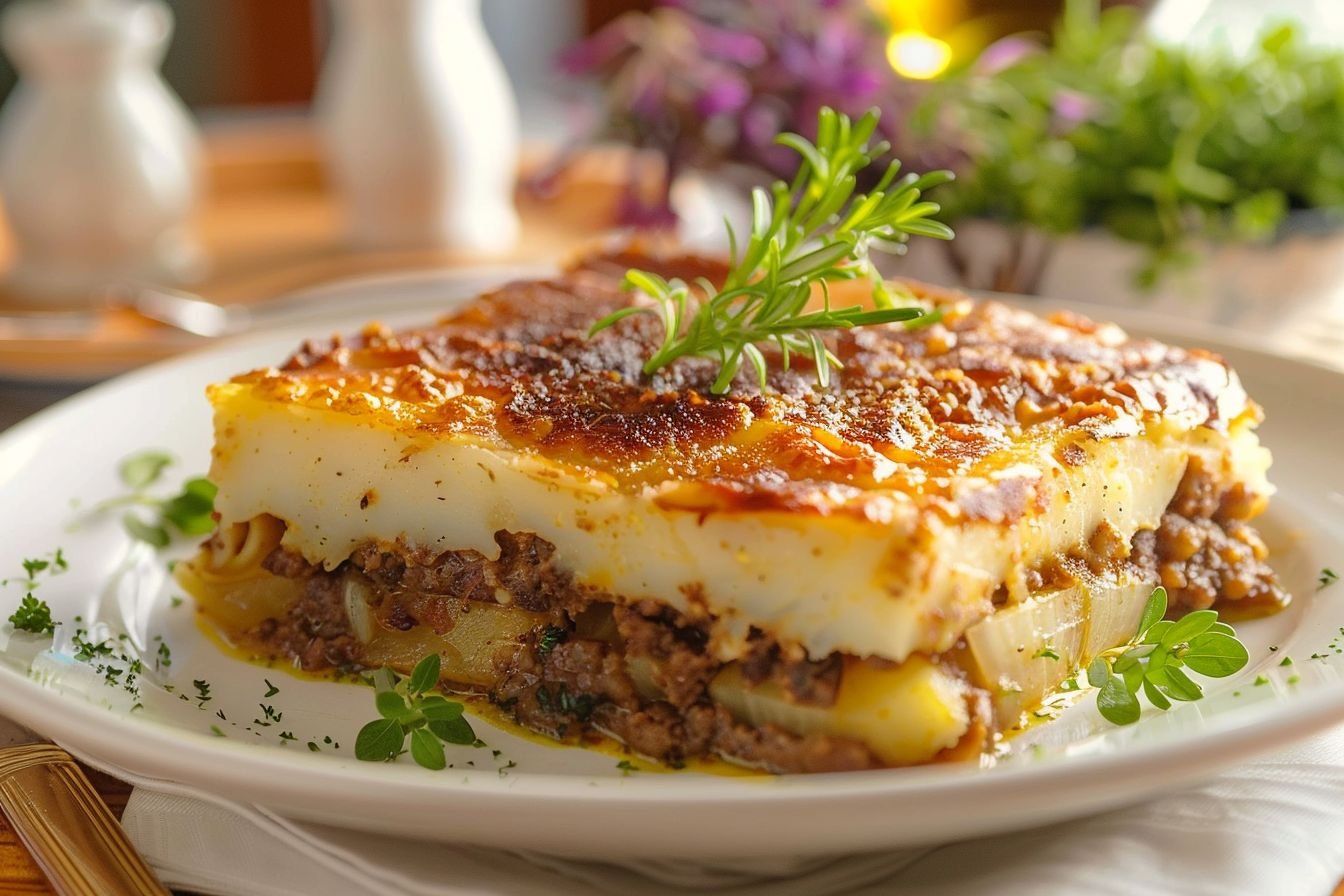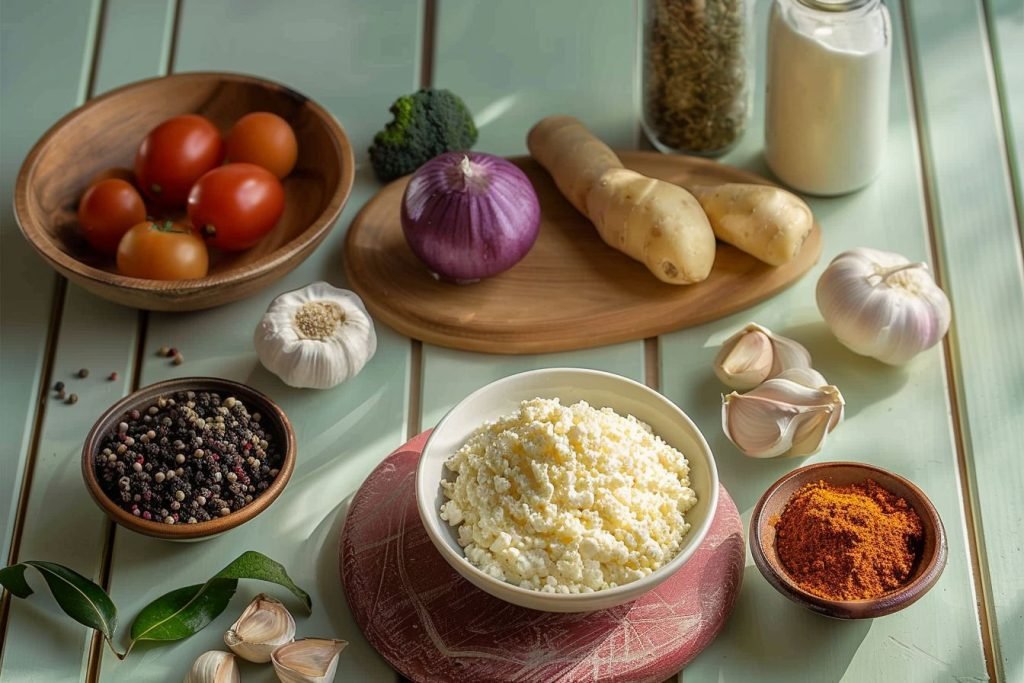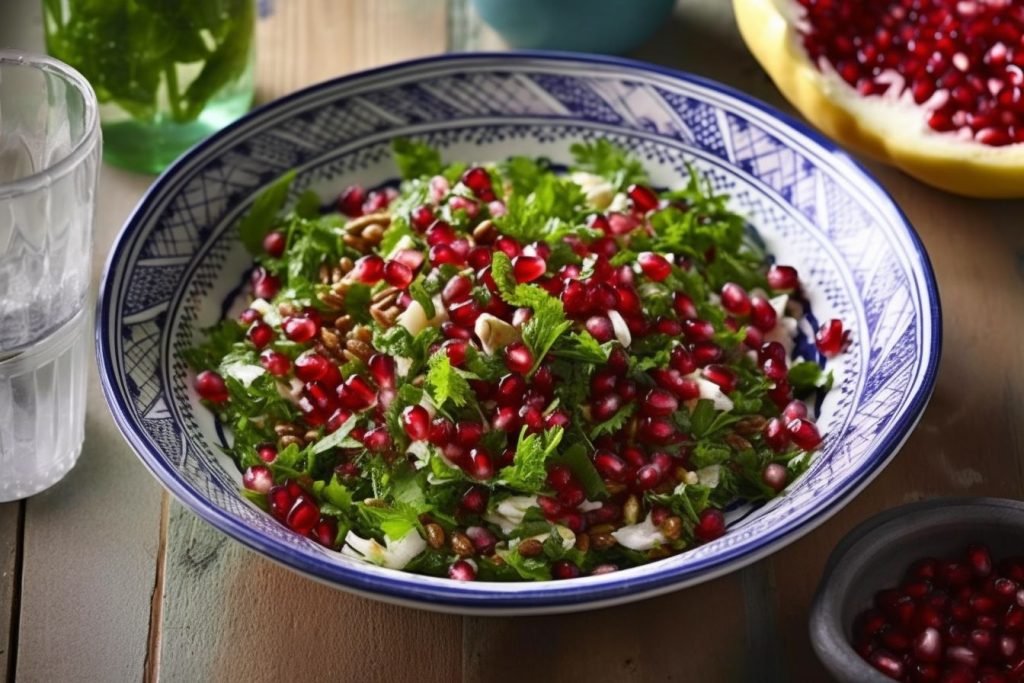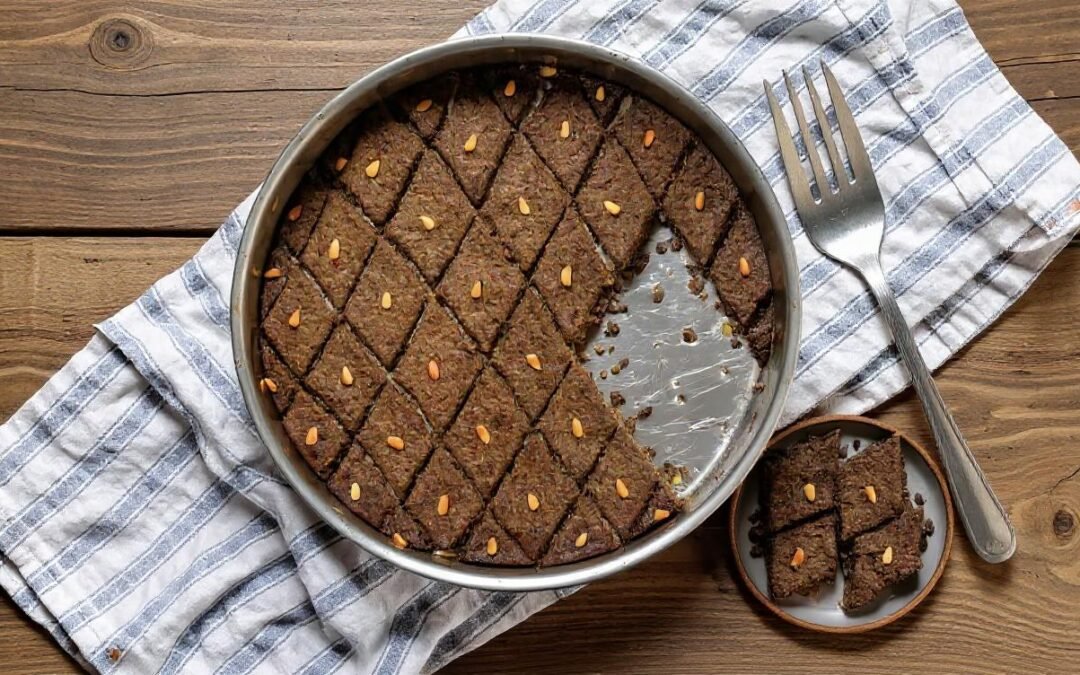Moussaka with potatoes and eggplant is a delicious and hearty dish that is popular in many Mediterranean countries. This savory casserole is typically made with layers of eggplant, ground meat, and a creamy bechamel sauce. While there are many variations of moussaka, this recipe includes potatoes in addition to the eggplant, adding an extra layer of texture and flavor to the dish.
To make this moussaka, you will need a few key ingredients. The recipe calls for six eggplants, vegetable oil, potatoes, beef or lamb mince, red onions, garlic, chopped tomatoes, tomato paste, sugar, red wine, and a variety of spices. The bechamel sauce is made with milk, butter, flour, nutmeg, egg yolks, and grated cheese.
History of Moussaka
Origins
The exact origin of moussaka is unknown, but it is believed to have originated in the Middle East. The dish was then introduced to the Mediterranean region by the Ottoman Empire in the 16th century. The word “moussaka” comes from the Arabic word “musaqqa’a,” which means “chilled.”
Over time, moussaka has become a staple dish in many Mediterranean countries, including Greece, Turkey, and Egypt. Each country has its unique take on the dish, with different variations of ingredients and spices.
Regional Variations
In Greece, moussaka is typically made with layers of eggplant, potatoes, and a spiced meat sauce. The dish is then topped with a thick layer of béchamel sauce and baked until golden brown. In Turkey, moussaka is made with a similar base of eggplant and meat sauce, but it is often flavored with cinnamon and allspice.
In Egypt, moussaka is made with layers of fried eggplant and a tomato-based sauce. The dish is then topped with a layer of béchamel sauce and baked until golden brown. In Lebanon, moussaka is made with layers of eggplant, potatoes, and a spiced meat sauce. The dish is then topped with a layer of tahini sauce and baked until golden brown.
Ingredients:
- 6 eggplants
- 5 potatoes
- Vegetable oil
Meat sauce:
- 750g (26 oz) minced lamb or beef
- 2 tablespoons of tomato paste
- 2 chopped cloves of garlic
- 2 chopped red onions
- 1 tin of chopped tomatoes (400g / 14oz)
- 1 teaspoon of sugar
- 1 glass of red wine
- 1 bay leaf
- 1 cinnamon stick or a pinch of cinnamon
- 1/4 cup of olive oil
- Salt and ground black pepper
Bechamel sauce:
- 900ml (31 fl. oz) of milk
- 120g (4 oz) of butter
- 120g (4 oz) of flour
- a pinch of nutmeg
- 2 egg yolks
- 100g (3.5oz) of parmesan, kefalotyri, or your favorite hard cheese
- salt to taste
How to make moussaka with potatoes and eggplant?
Eggplant Preparation:
- To commence, meticulously slice the eggplants into uniform one-centimeter-thick rounds. Season them generously with salt, and subsequently, dispose of excess moisture by placing them in a colander for a half-hour interval. Following the brining period, thoroughly rinse the eggplants and employ a gentle squeezing motion to eliminate any remaining liquid. To ensure optimal results, pat them dry with a clean cloth. Two cooking methods are presented: frying in oil or baking with olive oil for a health-conscious alternative.
Potato Preparation:
- Employing a similar technique as with the eggplants, thinly slice the potatoes to a desired half-centimeter thickness. Opt to either fry or bake them, and season them with salt according to your preference. Set the cooked potatoes aside for later incorporation.
Meat Sauce Construction:
- On medium-high heat, utilize a large pan to sauté chopped onions in olive oil until they achieve a softened and slightly caramelized state. Subsequently, introduce the ground meat and sauté it while meticulously breaking it up with a wooden spoon to ensure even cooking. As the meat begins to brown, incorporate the garlic and tomato paste, and continue to sauté until the garlic softens. Deglaze the pan by pouring in red wine, and allowing it to evaporate entirely. Next, add the canned tomatoes, sugar, a pinch of cinnamon, a bay leaf, and a generous amount of salt and pepper. Bring the mixture to a boil, then reduce heat and simmer with a lid for roughly 30 minutes, or until the majority of the liquids have evaporated. Once complete, set the sauce aside.
Bechamel Sauce Preparation:
- In a separate large pan, melt butter over low-medium heat. Gradually introduce flour while whisking continuously to form a paste-like consistency. Subsequently, incorporate warmed milk in a steady stream, whisking assiduously to prevent lumps from forming in the sauce. If the sauce necessitates further thickening, simmer it over low heat while continuing to stir. The ideal consistency should resemble that of heavy cream.
- Remove the pan containing the béchamel sauce from the heat source. Stir in the egg yolks, salt, pepper, and a pinch of nutmeg. Incorporate the majority of the grated cheese, reserving a portion for a final topping. Employ a brisk whisking motion to prevent the eggs from inadvertently transforming into an omelet. As a final step, season the sauce with salt to your liking. To ensure a cohesive integration of flavors, transfer a spoonful of béchamel into the meat sauce and stir it together. Set the béchamel sauce aside.
Moussaka Assembly:
- For this recipe, a large baking dish with approximate dimensions of 20×30 centimeters (8×12 inches) and a depth of 8 centimeters (3 inches) is recommended. Thoroughly grease the bottom and sides of the pan to facilitate easy removal later. The layering process commences with the potatoes (if using them), followed by half of the eggplants. Pour the entirety of the meat sauce over this initial layer and spread it evenly to ensure consistency. Next, add the remaining eggplants, and then generously coat the entire dish with the béchamel sauce, smoothing the top with a spatula for a uniform appearance.
- Sprinkle the reserved grated cheese over the top of the moussaka for a delightful gratinated finish. Preheat your oven to 180 degrees Celsius (350 degrees Fahrenheit). Bake the moussaka for approximately 60 minutes, or until the top develops a light golden-brown crust.
- While the prospect of indulging in the moussaka immediately upon its removal from the oven might be tempting, it is imperative to exercise patience. Allow the moussaka to cool down slightly, reaching a temperature just warm to the touch, before cutting it into portions. This step is crucial to prevent the béchamel sauce from running out when plating, thereby compromising the overall presentation and potentially detracting from the delightful eating experience.
Serving Suggestions
Accompaniments
This moussaka is a hearty and flavorful dish that can be enjoyed on its own or paired with a variety of accompaniments. For a light and refreshing option, consider serving a side salad with a simple vinaigrette dressing. A Greek salad with tomatoes, cucumbers, red onions, and feta cheese is a classic choice that complements the flavors of the moussaka.
If you prefer something more substantial, consider serving the moussaka with a side of rice pilaf or roasted vegetables. Roasted asparagus, zucchini, and bell peppers are a colorful and delicious option that will add texture and flavor to the meal.
Presentation
Presentation is key when serving moussaka with potatoes and eggplant. To create an impressive and visually appealing dish, consider layering the moussaka in a deep casserole dish and topping it with a sprinkle of fresh herbs, such as parsley or oregano.
For a more rustic presentation, serve the moussaka in individual ramekins or cast iron skillets. This will create a cozy and intimate atmosphere, perfect for a casual dinner party or family gathering.
Nutritional Information
Moussaka is a delicious and hearty dish that is popular in many Mediterranean countries. It is typically made with layers of eggplant, ground beef, and a creamy béchamel sauce. However, this recipe includes potatoes in addition to eggplant, which adds an extra layer of flavor and texture to the dish.
While moussaka is a tasty and satisfying meal, it is important to consider its nutritional value. Here is a breakdown of the key nutrients in this recipe:
Protein
Ground beef is a primary source of protein in this dish. A 4-ounce serving of lean ground beef contains approximately 15 grams of protein. This nutrient is essential for building and repairing muscle tissue, as well as supporting immune function and hormone production.
Fiber
Both eggplant and potatoes are excellent sources of dietary fiber. Fiber is important for maintaining digestive health and promoting feelings of fullness. One serving of this moussaka contains about 5.3 grams of fiber.
Vitamins and Minerals
Eggplant and potatoes are packed with vitamins and minerals. Eggplant provides vitamin C, vitamin K, and potassium, while potatoes offer vitamin C, vitamin B6, and potassium. These are important for maintaining healthy skin, bones, and muscles.
The full nutrition list
| Calories: 455kcal | Trans Fat: 0g |
| Sugar: 11g | Carbohydrates: 61g |
| Sodium: 84.6mg | Fiber: 5.3g |
| Fat: 19.1g | Protein: 14.7g |
| Saturated Fat: 8.2g | Cholesterol: 72.1mg |
| Unsaturated Fat: 9.7g |
Variations and Substitutes
Vegetarian Options
For those who prefer a vegetarian version of this moussaka, several options are available. One option is to substitute the ground beef with lentils, chickpeas, or mushrooms. These options will provide a similar texture and flavor to the dish. Another option is to use tofu or tempeh as a protein source. These options are also great for those who are looking for a vegan option.
Dairy Substitutes
For those who are lactose intolerant or vegan, several dairy substitutes can be used in the dish. One option is to use almond or soy milk instead of regular milk. This will provide a similar texture and flavor to the dish. Another option is to use vegan cheese instead of regular cheese. Vegan cheese is made from plant-based ingredients and is a great alternative for those who are looking for a dairy-free option.
Common Mistakes to Avoid
1. Skipping the Salting Step
Eggplants are notorious for being bitter, and salting them before cooking can help remove some of that bitterness. Skipping this step can result in a bitter-tasting moussaka. To salt the eggplant, slice it into rounds or strips, sprinkle with salt, and let sit for 30 minutes. Rinse the salt off and pat dry before using.
2. Using Watery Vegetables
Both potatoes and eggplants can release a lot of water when cooked, which can make the moussaka watery and unappetizing. To avoid this, make sure to choose firm and fresh vegetables, and slice them thinly. You can also sprinkle a little bit of salt on the vegetables to draw out some of the moisture before cooking.
3. Overcooking the Bechamel Sauce
The bechamel sauce is a crucial component of moussaka, but it’s easy to overcook it and end up with a grainy or lumpy sauce. To avoid this, make sure to whisk the sauce constantly while cooking, and remove it from the heat as soon as it thickens. If the sauce does become lumpy, you can try blending it with an immersion blender or whisking it vigorously to smooth it out.
Storage and Reheating
The best way to store moussaka is to transfer it to an airtight container and place it in the refrigerator. When stored properly, moussaka can last up to 3-4 days in the refrigerator.
If you plan on reheating moussaka, it’s important to do so safely to avoid any potential foodborne illnesses. To reheat moussaka, preheat your oven to 350°F and place the desired amount of moussaka in an oven-safe dish. Cover the dish with foil and bake for 20-25 minutes or until the internal temperature reaches 165°F.
Alternatively, you can reheat moussaka in the microwave. Put as much moussaka as you want in a dish that you can use in the microwave, then cover it with a lid or plastic wrap that’s safe for the microwave. Heat the moussaka on high for 1-2 minutes, stirring halfway through, until it’s heated through.
It’s important to note that moussaka should not be reheated more than once. Reheating it multiple times can increase the risk of foodborne illnesses. Additionally, if the moussaka has been sitting at room temperature for more than two hours, it’s best to discard it to avoid any potential health risks.
Conclusion
Moussaka with potatoes and eggplant is a delicious and hearty dish that can satisfy any appetite. The combination of tender eggplant, creamy potatoes, and flavorful ground meat creates a satisfying and filling meal that is perfect for any occasion.
One of the best things about moussaka is its versatility. It can be served as a main course or as a side dish, depending on your preferences. It can also be customized to suit your tastes by adding different spices or vegetables.
When preparing it, it is important to take your time and follow the recipe carefully. This will ensure that your dish turns out perfectly every time. Additionally, it is important to use fresh, high-quality ingredients to ensure the best flavor.
Overall, moussaka with potatoes and eggplant is a classic dish that has stood the test of time. Whether you are cooking for your family or hosting a dinner party, this dish is sure to impress. So why not give it a try and see for yourself how delicious it can be?
As you’ve seen above, fresh salad is a great pairing to this dish.
Get this mint and pomegranate salad now (by clicking the image below):






